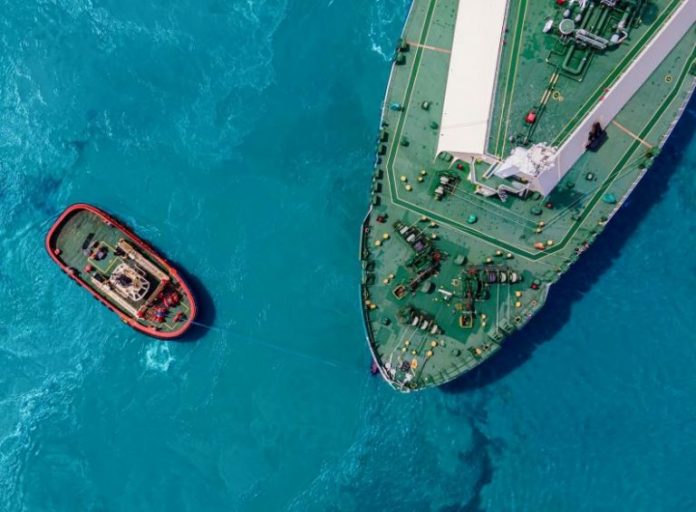Last month, global LNG imports increased by 1.23 Mt year-on-year to 34.59 Mt, marking a y-o-y increase for the eighth consecutive month of annual growth.
Doha-based GECF said the growth was primarily driven by higher imports in Europe, with additional support from the MENA region, which together offset weaker LNG inflows into the Asia Pacific and Latin America & the Caribbean regions.
According to GECF, the narrow price spread between European LNG and Asian spot LNG continued to favour US LNG deliveries to Europe.
Between January and September 2025, aggregated global LNG imports grew by 4.9 percent (15.03 Mt) y-o-y to reach 320.21 Mt, driven mainly by Europe and MENA regions, GECF said.
European LNG imports surge
In September 2025, Europe’s LNG imports surged by 40 percent y-o-y (2.54 Mt) to reach 8.95 Mt, doubling the growth recorded in August, GECF said.
This surge was primarily driven by a decline in pipeline gas imports and stronger demand for gas injection into underground storage ahead of the winter season.
At the country level, Belgium, France, Germany, Italy, the Netherlands, Poland, and Spain led the growth, offsetting declines in the UK, GECF said.
The rise in Belgium’s LNG imports was driven by reduced pipeline gas supplies from Norway, increased gas injection into storage, and higher pipeline exports to Germany and the Netherlands.
In France, LNG imports were supported by lower Norwegian pipeline deliveries, stronger storage injections, and a rise in pipeline exports to Belgium.
Germany’s LNG import growth stemmed from higher injection into underground storage, the ramp-up of imports via the Wilhelmshaven 2 FSRU, and increased pipeline exports to neighbouring countries, GECF said.
Italy recorded a surge in LNG imports due to declining pipeline gas flows multiple countries, coupled with stronger storage injections.
In the Netherlands, the jump in LNG imports was linked to declining domestic gas production, reduced pipeline imports from Norway, robust injection into storage, and increased pipeline exports to Germany.
GECF said Poland’s LNG imports rose on the back of stronger gas injection into storage and growing pipeline exports to Ukraine.
In Spain, rising domestic gas consumption, increased storage injections, and reduced pipeline imports from France and Portugal supported the growth in LNG imports.
From January to September 2025, Europe’s aggregated LNG imports reached 94.05 Mt,
representing an increase of 28 percent (20.50 Mt) y-o-y.
Asia Pacific LNG imports down
GECF said that Asia Pacific’s LNG imports fell by 5.3 percent (1.26 Mt) y-o-y to 22.67 Mt in September, reversing its y-o-y increase recorded in August.
The weaker LNG imports was driven mainly by China, Japan and Malaysia, which were offset by stronger imports in Bangladesh, India, and South Korea.
In China, stronger domestic gas production and increased pipeline gas imports, combined with weak industrial gas demand, contributed to a decline in LNG imports, GECF said.
In Japan, lower gas demand in the power sector led to a reduction in LNG imports.
Malaysia’s LNG imports also declined, likely due to stronger domestic gas production.
Conversely, Bangladesh recorded a notable increase in LNG imports, driven by rising spot LNG demand, GECF said.
In India, LNG imports rose amid weaker domestic gas production and more favourable spot LNG prices compared to a year earlier.
Meanwhile, in South Korea, pre-winter LNG restocking and the governmentimposed cap on coal-fired power generation (effective from 20 September to 16 November) supported a rise in LNG imports.
Between January and September 2025, aggregated LNG imports in the Asia Pacific region fell
by 4.3 percent (9.03 Mt) y-o-y to 201.12 Mt, GECF said.
Latin America and MENA
GECF said that LNG imports in the Latin America & the Caribbean region slumped by 44 percent (0.60 Mt) y-o-y to reach 0.76 Mt, the weakest imports since February 2025.
This decline was driven mainly by Brazil while Puerto Rico recorded an uptick in imports.
GECF said that the decline in Brazil’s LNG imports was primarily driven by reduced gas consumption in the power sector.
Despite lower hydro output, increased electricity generation from solar and wind sources curbed gas-fired generation.
Meanwhile, the rise in LNG imports in Puerto Rico was supported by stronger gas demand in the power sector.
Between January and September 2025, aggregated LNG imports in the LAC region fell by 11 percent (1.28 Mt) y-o-y to 10.06 Mt, GECF said.
According to GECF, LNG imports in the MENA region jumped by 41 percent (0.61 Mt) y-o-y, reaching 2.09 Mt.
Egypt was the primary driver of this increase as declining domestic gas production, coupled with rising gas demand, continued to boost the country’s LNG import needs.
From January to September 2025, aggregated LNG imports in the MENA region reached 13.97
Mt, representing an increase of 58 percent (5.15 Mt), GECF said.
LNG exports rise
GECF said that global LNG exports rose by 4.2 percent y-o-y (1.40 Mt) to reach 34.91 Mt, marking the slowest pace of growth since June 2025.
The increase was primarily driven by non-GECF countries, and to a lesser extent from LNG re exports, which offset weaker LNG exports from GECF member countries.
Between January and September 2025, cumulative global LNG exports grew by 4.7 percent y-o-y (14.31 Mt) to reach 319.46 Mt.
GECF said this growth was supported by stronger LNG exports from non-GECF countries and a modest uptick in LNG exports from GECF member vountries and re-export activity.4
The share of LNG exports from non-GECF countries continued to rise, increasing from 50.6 percent in September 2024 to 55.4 percent in September 2025.
Similarly, the share of LNG re-exports moved slightly higher from 0.5 percent to 0.6 percent.
In contrast, the share of GECF member countries declined over the same period, falling from 48.9 percent to 44 percent.
GECF said the US, Qatar, and Australia remained the top three LNG exporters.
